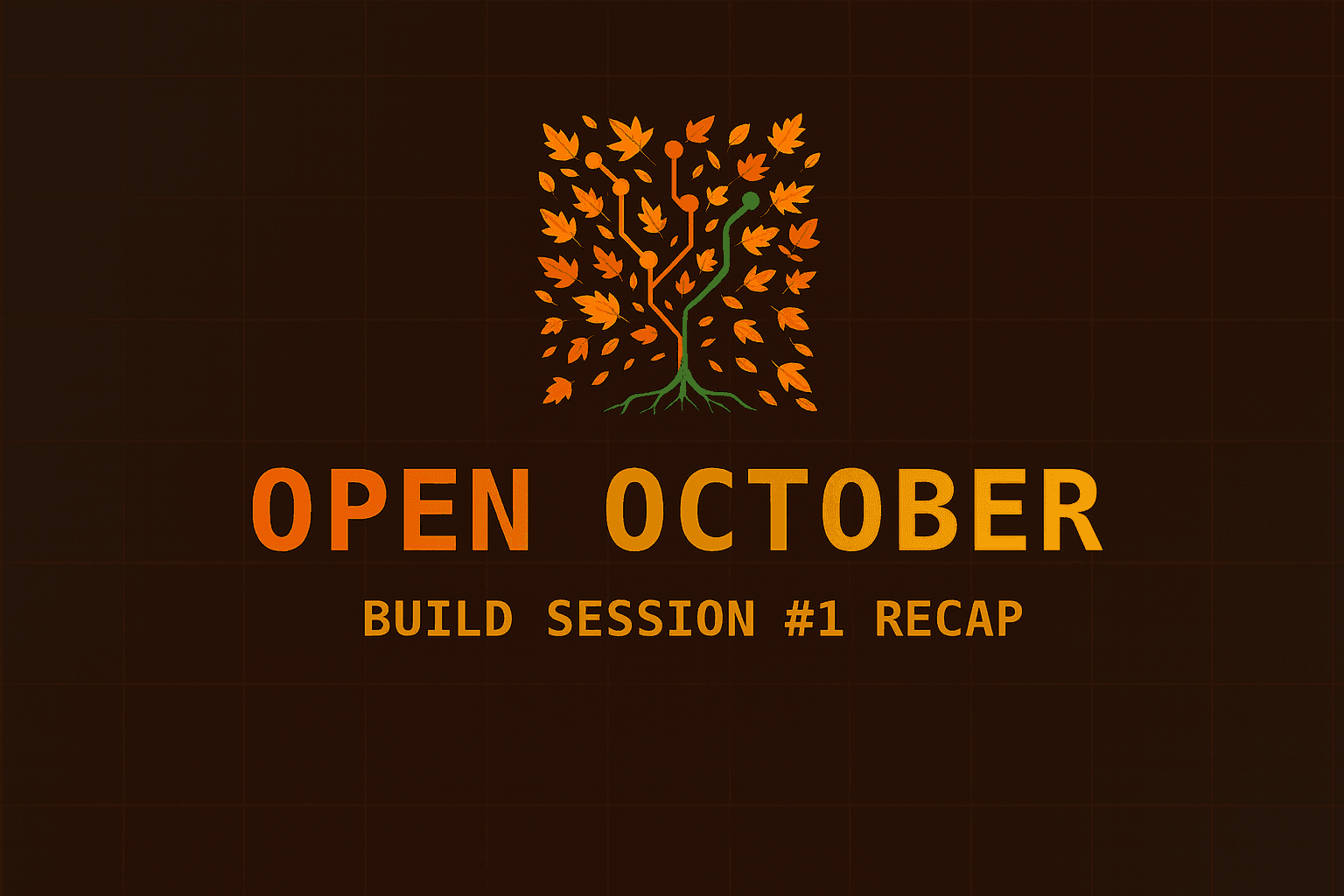
🛠️ Open October Build Session #1 Recap
Our first build session brought together new and returning contributors to share updates and project ideas.
At a recent gathering of builders and technologists, we had the chance to hear from some visionary voices: Jeremy Marley broke down the evolution of DePIN from wireless mesh networks to decentralized data and energy systems; Jon Gagnon of Cloud99.ai shared how AI is reshaping the future of game development at a foundational level; and Stephen Black showcased his work in location-based AR across Japan and the Midwest — turning physical spaces into interactive layers of story, education, and commerce.
Read more about the talks:
Rebuilding Infrastructure from the Ground Up: A Deep Dive into DePIN with Jeremy Marley
What I Heard Sitting in the Crowd: A Decade of AR, from Crunch Time to QR Codes
From Spaghetti Code to Solo Dev Studio: Lessons from a 20-Year Game Development Journey
A common thread emerged: these aren’t siloed innovations — they’re pieces of a shared future, where infrastructure, immersion, and interactivity converge to power new forms of community expression and ownership.
1. Grounded in the Real World
DePIN projects, like Helium or decentralized mapping networks, bring blockchain into physical space — building open infrastructure on top of real-world needs. AR overlays digital experiences on our environment. Game development? It’s no longer just about fantasy — it’s about interaction, whether that's scanning a QR code on a mural or collecting an artifact during a live event.
2. Participation = Ownership
Each of these technologies invites participation. Whether it's contributing to a DePIN network, creating a digital overlay in AR, or designing a custom quest in a game — the user is the builder. And with Web3 tools, contributors now own a piece of the experience they help shape.
3. They All Power Community Games IRL
When combined, these tools are redefining how we gather and play. A scavenger hunt powered by DePIN location data, enhanced through AR visuals, and driven by game mechanics like XP, POAPs, and NFTs? That’s not sci-fi — it's the blueprint for games like Collector Quest.
Stay tuned as we continue to blur the lines between digital and physical — and invite our communities to play, build, and own the future.
Get notified when I publish new posts about building meaningful tech for real communities.

Our first build session brought together new and returning contributors to share updates and project ideas.

OpenOctober kickoff recap: creatives + technologists aligning to build open, local-first tools for Detroit. Submit your project by Oct 7.

At this month’s Vibe Coding meetup, we explored how AI tools like Cursor can speed up projects—or derail them without clear direction. I shared the Renaissance City LaunchPad, a cultural shift and support ecosystem empowering community organizers to build, own, and sustain their own technology.